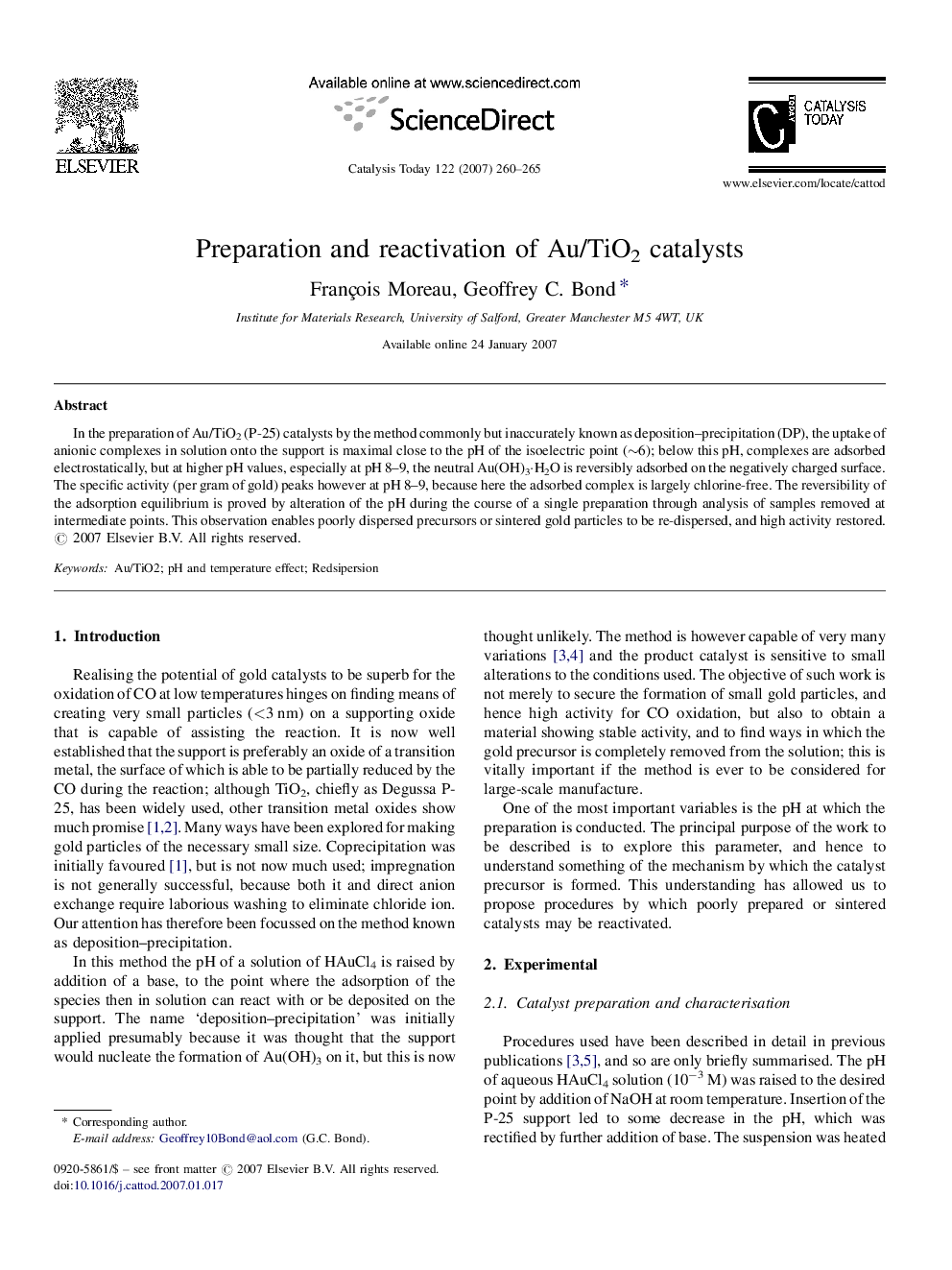| Article ID | Journal | Published Year | Pages | File Type |
|---|---|---|---|---|
| 58399 | Catalysis Today | 2007 | 6 Pages |
In the preparation of Au/TiO2 (P-25) catalysts by the method commonly but inaccurately known as deposition–precipitation (DP), the uptake of anionic complexes in solution onto the support is maximal close to the pH of the isoelectric point (∼6); below this pH, complexes are adsorbed electrostatically, but at higher pH values, especially at pH 8–9, the neutral Au(OH)3·H2O is reversibly adsorbed on the negatively charged surface. The specific activity (per gram of gold) peaks however at pH 8–9, because here the adsorbed complex is largely chlorine-free. The reversibility of the adsorption equilibrium is proved by alteration of the pH during the course of a single preparation through analysis of samples removed at intermediate points. This observation enables poorly dispersed precursors or sintered gold particles to be re-dispersed, and high activity restored.
